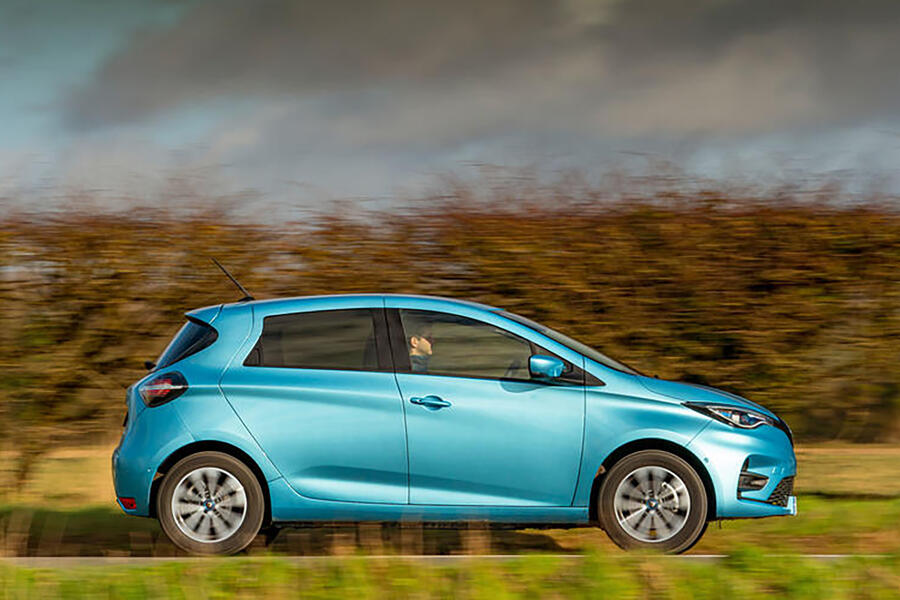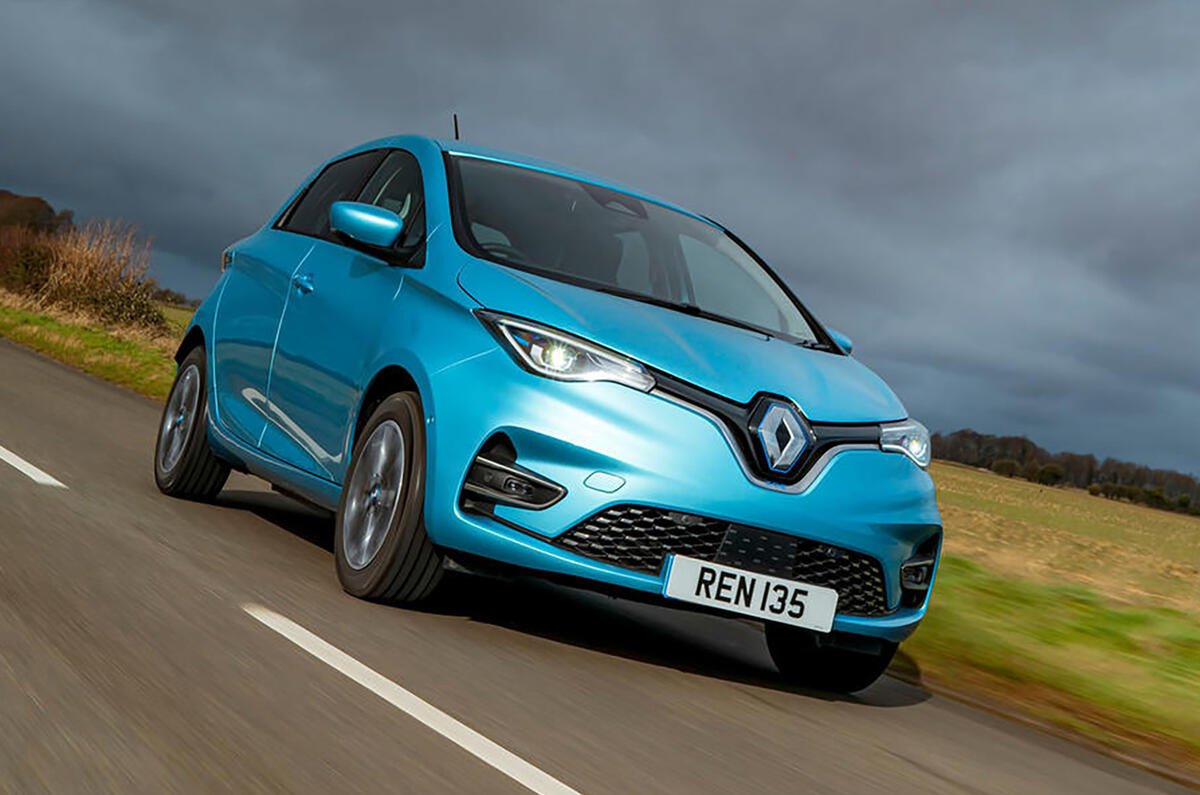GSR2 safety regulations have made at least 20 technologies standard on all new cars sold in the EU and the UK – and will legislate some out of existence.
The arsenal of standard safety equipment, brought in under the anonymously titled General Safety Regulations 2 (GSR2), will also add more costs to cheaper cars, likely increasing their prices.
The changes had been in discussion at the UN and the EU for a decade before the EU finalised its proposals in 2019.
They’re being introduced in two main phases. The first went live on 6 July 2023 and the second will come later, in 2024, although some technologies are on a slightly different timetable.
That means all new cars launched after 6 July 2022, regardless of price or engineering suitability, have to comply; and soon, existing cars already on the market will have to be modified or retrofitted to stay on sale.
This retrofitting is what will kill off many cars. For instance, the Renault Zoe has been withdrawn from sale because making it comply with GSR2 regulations would be too expensive. The required safety kit can’t easily be built into the car’s architecture, which was essentially first introduced in 2012. The rules will also restrict Alpine A110 sales.
Insurance industry
The insurance and safety industry, of course, is much more sanguine about the introduction of GSR2.
“This is essentially tidying up existing laws and an update of GSR1, which has been around since 1998, especially since many of these new safety features are already incorporated into existing Euro NCAP [safety] ratings,” said Matthew Avery, formerly the director of research for UK insurance and safety organisation Thatcham Research, and a senior Euro NCAP team member.
The motive behind GSR2 was an EU push to halve the number of road deaths by 2020 and “move close to” zero road deaths by 2050.

The car industry says that it makes safety a priority, but there remains concern within it about the rigidity of the regulations as applied to certain car classes and the EU’s unwillingness to adjust its timetable to fit with model-cycle changes and the global cycle of safety laws.
Ford’s head of homologation, Douwe Cunningham, agreed that there were “no surprises” with some of the technology, such as advanced emergency braking (AEB) and the intelligent speed assistance (ISA) warning system, because they were already part of NCAP.
But there’s a belief that the EU is pushing some of the hardware beyond its reliable use in day-to-day service.
Cunningham raised the question of ISA’s reliability, given that it relies on cameras reading road signs that in many countries are badly maintained, absent and difficult to detect.
![]()
The EU regulation also allows for GPS-based speed limit warnings, which rely on perfect mapping accuracy.
Therefore manufacturers that want to make the best offerings for their customers, such as Ford, feel obliged to offer both systems – but on more affordable cars, that means more parts costs added on.
There are also 'big brother' elements in the regulations. For example, the driver drowsiness warning will be handled by an in-car infrared camera, always focused on the driver’s face, to detect eye movements.
GSR2 is now on the statute books and therefore a legal requirement, but whether it will actually be effective in reducing road deaths only time will tell.
Standard GSR2 safety tech now standard for all new cars
Advanced emergency braking: Now includes new calibration.
Alcohol interlock: Provision for this until a reliable sensor can be developed.
Driver drowsiness distraction: Will move to advanced infrared camera tech in 2024.
Electronic data recorder: Better known as a black box. Harmonised with US regulations.
Emergency lane keeping system: Steers car away from crossing the road’s central white line.
Intelligent speed assistance: Warns driver of speed limit. Could overrule the driver in the future.
Q&A: Expert engineers from Horiba MIRA
We spoke to three experts from Horiba MIRA: Ashley Patton (ADAS and CAV chief engineer), David Inch (certification and homologation) and Aaron Mandalia (CAV solution leader).
How extensive is GSR2?
“It’s a massive list of 100 or so regulations, depending on vehicle category. Some are amendments, but we’ve identified about 20 to 25 items that are new, where we need to improve our capability out to 2024.”
What’s the aim?
“It’s not inventing a lot from scratch, because many of the features have been around in some form. The EU is trying to create some consistency so that everyone is taking the same approach. That’s welcome.”
How will it affect planning?
“Manufacturers will be debating whether to continue a product by improving it or let it die in July 2024. Those decisions will mostly have been made in strategy, because the timescales aren’t massive.”
![]()
How about small cars?
“They’re definitely impacted as high-volume, low-margin vehicles. Adding extra features adds costs, so the manufacturer either has to increase price or consider whether that vehicle is worth selling any more.”
Surely it will be difficult to retrofit features to existing cars by 2024?
“As GSR2 moves to existing products, yes, you probably will see lots disappearing off the market.”
What about integration into the vehicle?
“Manufacturers will have to consider whether it’s worth updating vehicles with older electric architectures, where this technology isn’t fitted because it wasn’t needed for an NCAP safety rating, to comply with GSR2."
How many vehicle categories are affected?
“It’s not just cars: the ethic of GSR2 is to apply it as widely as possible to as many vehicle categories as they can, so that’s buses, trucks, vans, fire engines – all vehicles, really.”




Join the debate
Add your comment
Protects automotive jobs and boosts manufacturing confidence in the UK. Trusted expert helping users fix AppleCare virus warning & iPhone security alert. I’ve written something new—check out my blog. In recent years, many iPhone users have encountered alarming messages on their screens, such as the AppleCare virus warning or a sudden iPhone security alert. These pop-ups claim that your device is infected with a dangerous virus, and often urge you to call a support number or click a link. While they look legitimate, these warnings are not from Apple. They are part of a growing wave of scams designed to trick users into revealing personal data or installing harmful software.What Is the AppleCare Virus Warning?The “AppleCare virus warning” is a deceptive message that typically appears while browsing the internet. It mimics an official Apple alert, complete with Apple logos, technical jargon, and a convincing layout. It may say something like:“Your iPhone has been infected with a Trojan virus. Immediate action is required. Call AppleCare Support now at 1-800-XXX-XXXX.”These messages exploit users’ trust in Apple’s brand. By falsely invoking AppleCare — Apple’s real support and protection plan — scammers hope to gain credibility and make users panic.Understanding the iPhone Security Alert ScamSimilar to the AppleCare virus warning, an iPhone security alert is another tactic scammers use to manipulate iPhone users. These alerts often say your device has been compromised, your data is at risk, or someone is trying to access your photos or banking information.They usually come with urgent instructions like:“Do not close this page.”“Contact Apple Support immediately.”“Download this security app now.”These scare tactics are meant to push you into acting without thinking — either by calling a fake Apple support number or clicking a malicious link.How These Scams WorkHere’s how the scam typically unfolds:Pop-Up Alert: You visit a website or click on an ad that triggers the fake warning.Panic Message: The alert appears, warning about viruses, hacked data, or spyware.Urgency: You are urged to act fast — call a number or click a link.Scammer Interaction: If you call, a scammer pretending to be an Apple support agent answers.Phishing or Malware: They may ask for your Apple ID, credit card details, or try to convince you to install an app or give remote access to your device.Once they have this access, they can steal your data, install real malware, or demand money to "fix" your phone.Why These Alerts Look ConvincingScammers use several tricks to make these warnings seem real:Use of Apple logos and terms like “AppleCare” and “iOS Security.”Design mimicry: The layout looks identical to Apple’s real system alerts.Browser behavior: They lock your screen or repeatedly reload the message to make it hard to close.However, it’s important to remember: Apple does not send virus alerts via Safari pop-ups or ask users to call a support line through a website.What to Do If You See a Fake AppleCare Virus WarningIf you encounter one of these alerts, follow these steps:Do Not Click on any links or call the number provided.Force Close Safari or whatever browser you're using.Clear Browser History:Go to Settings → Safari → Clear History and Website Data.Restart Your Device.Enable Pop-Up Blockers:Settings → Safari → Block Pop-ups (turn it on).Report the Scam to Apple:Visit reportphishing.apple.com.How to Stay Protected Against Fake iPhone Security AlertsTo protect your iPhone and personal information from scams like these:Never trust pop-ups asking for personal information.Don’t install unknown apps or allow remote access unless you're absolutely sure it’s legitimate.Use official Apple support through the Apple Support app or Apple’s official website.Keep your iPhone updated with the latest iOS version.Avoid suspicious websites, especially ones that offer free movies, pirated software, or adult content — these are common sources of such scams.Can iPhones Get Viruses?It’s rare, but not impossible. iPhones are designed with strong security features, and apps are sandboxed (isolated from each other), making it hard for viruses to spread. However, jailbroken devices — those modified to bypass Apple’s restrictions — are more vulnerable.That said, the majority of iPhone virus warnings are fake. Real malware is stealthy, not obvious. If you ever suspect a real issue, it’s best to contact Apple Support directly or visit an Apple Store.Final ThoughtsThe AppleCare virus warning and iPhone security alert scams are crafted to scare users and exploit their trust in Apple’s brand. By recognizing these fake alerts and understanding how they work, you can avoid falling victim to these cyber traps.Remember: Apple does not issue virus warnings through pop-ups. If you ever see one, treat it as a scam — not a security feature. Stay alert, be skeptical of unsolicited messages, and always use trusted channels for tech support.
dscscsdcds
It's just the EU regulating what people can have by jacking up the prices so Joe Average can't afford a new car. Glad we left that absolute farce.
I'm glad we left too but for other reasons. If we want to sell cars to the EU then we have to comply.
However the UK government have agreed to align themselves with the EU on this which means in makes no difference whether the UK is in or out of the EU on this matter. Anyone selling cars to the UK will have to adhere to the new rules.